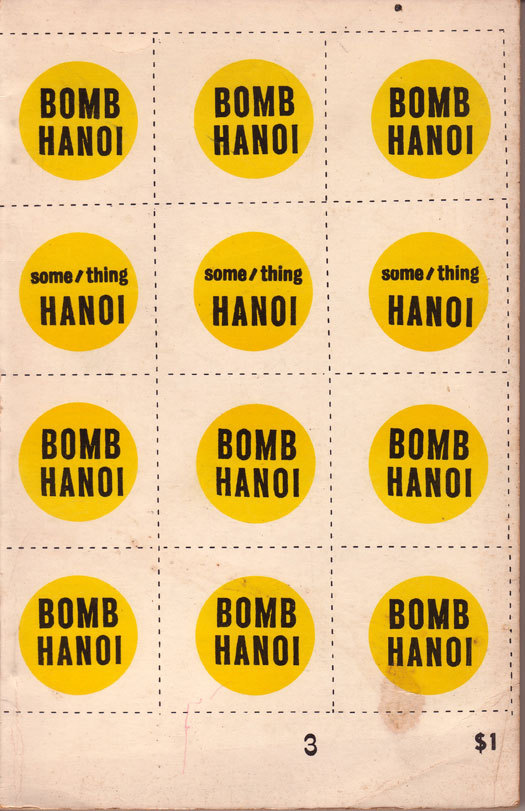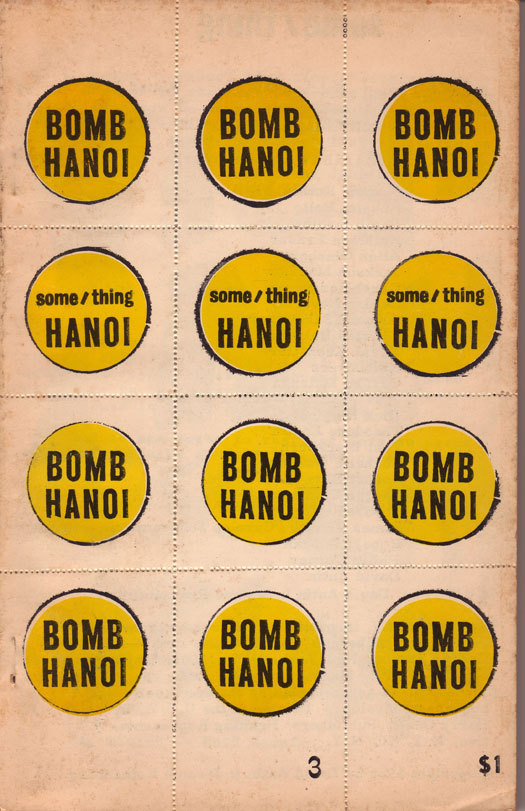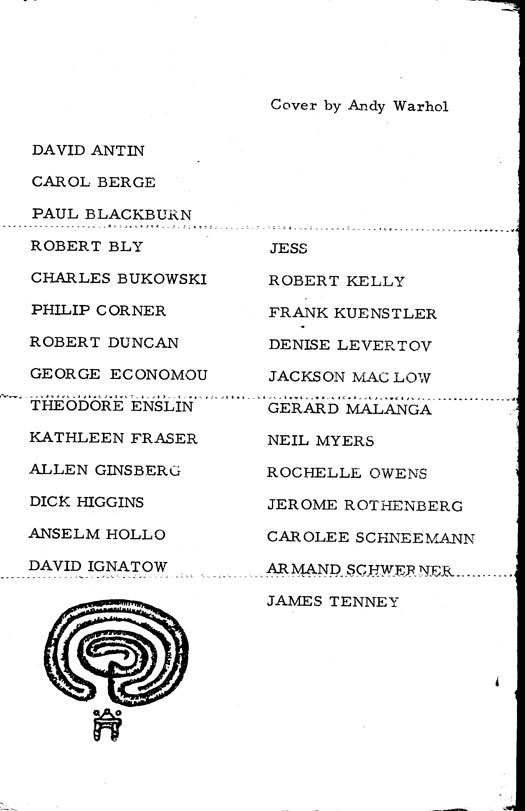[M]y publications did give me access to gallery back rooms and got me set up as correspondent from the New York art scene for several European magazines. They also got me a Warhol cover for the Vietnam issue of some/thing, the poetry magazine I edited with my old friend Jerry Rothenberg. Though the cover was not without its difficulties.
When I went to see Andy I showed him our previous issues and told him about the Vietnam issue we were planning, he said, “Great!” What he’d really like to do was a Vietcong flag. But I said, “What we’d like you to do is take a prowar slogan like ‘BOMB HANOI!’ put it on the cover as a button, and fuck it up any way you like.” So Andy said, “Great!” and I thought it was settled. But over the next two weeks I ran into Gerard Malanga twice in the Eighth Street Bookshop, and he told me Andy would really like to do a Vietcong flag. Finally I said, “Look Gerard, I don’t know too much about the Vietcong, and neither do you or Andy. But what we do know about are the American warmongers. So what I want is for Andy to take one of their idiot slogans and fuck it up any way he likes for our cover. That way any member of the American Legion could pick up a copy on a news stand and maybe read it.” Andy finally did it with the image of the BOMB HANOI button repeated over and over gain on a cover that functioned as a page of grungy looking stamps you could tear apart along the perforations and if you felt like it glue on a wall. When I gave Allen Ginsberg his copy, Allen’s jaw dropped and he said “What’s this?” Then he turned it over, saw his name on the back and said, “It’s all right, I’m in it.”

Some/thing Vol. 2, No.1, Winter 1966. "The cover that our foolish Printing Representative had printed without consulting Warhol or the magazine editors — David Antin and Jerome Rothenberg. It had no perforations — just dotted lines representing them and no glue. His cover was a cleaned up weak representation of the grungy stamp we had all wanted and Warhol had designed. Andy justifiably hit the roof and we paid for a new cover. You can see what Andy's esthetic commitments were by comparing the two covers."

Some/thing Vol. 2, No.1, Winter 1966. "The cover Warhol finally approved for the Bomb Hanoi issue. The cover was a sheet of real glue-backed stamps, made convenient for tearing out and pasting on telephone poles or subway walls by real perforations. It carried the deteriorated pro-war image Warhol was trying to show in all its pro-war shabbiness. It rhymed with the collage of war-promoting propaganda of the American and South Vietnamese Generals and the 'Best and the Brightest' — the Rusks, the McNamaras, the Rostows and the still servile American press that surrounded a hapless LBJ in which we embedded the poetry and prose of the American avant-garde."

Some/thing Vol. 2, No.1, Winter 1966. Back cover which gives the list of poets and artists in the issue.
